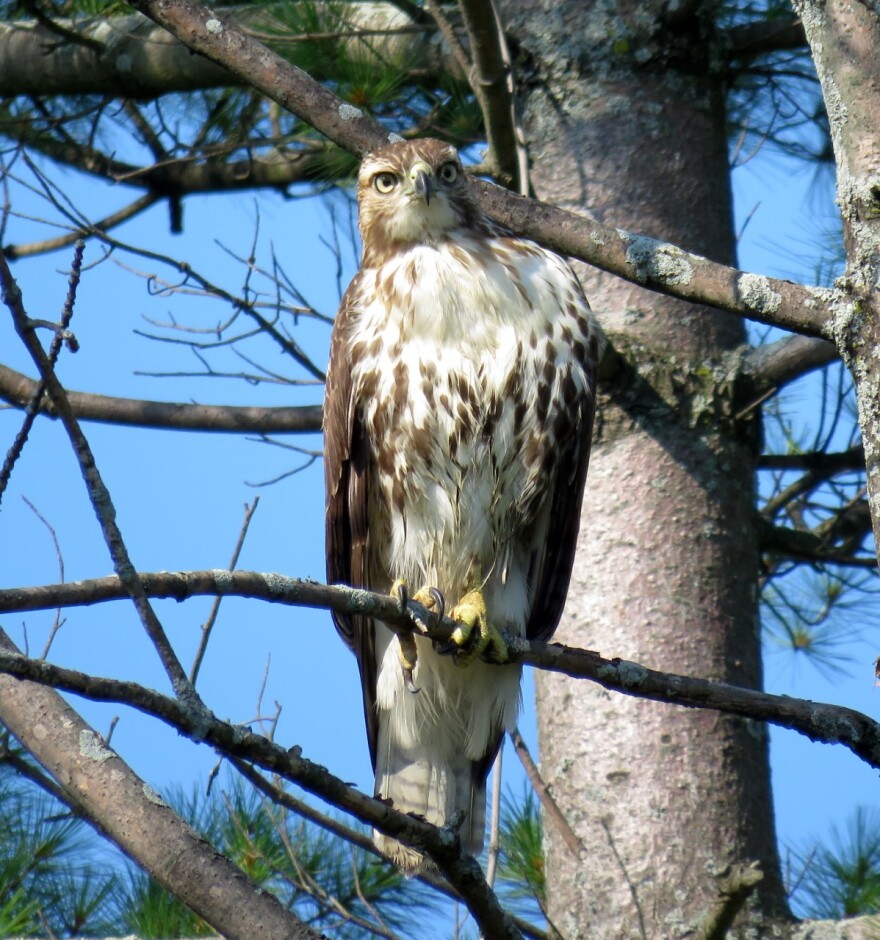At last count, Wisconsin was home to more than 230 different species of birds. Now, 1,000 surveyors are pooling data for across the state to see if those numbers are holding.
In the Wisconsin Breeding Bird Atlas II survey, bird experts aren’t counting the ones who simply stop over during migration, rather those that rely on Wisconsin's habitats to multiply.
From 1995 to 2000, the first study documented birds that hatched and raised their young in Wisconsin. Now, surveyors are watching and listening for another five-year period and will compare these results with the first count.

Why so long? “Well, we have to cover the whole state, so we’ve got over 1,000 3-mile-by-3-mile blocks to cover,” says conservation biologist Nicholas Anich. He’s based in Ashland and is coordinating Wisconsin’s second atlas.
Atlas II, So Far
A year and a half into the process, Anich says some species appear to be stable, while others have shown increases.
"A species like wild turkey is one with a very obvious range expansion," he says. "They used to never be up here in the north and if you look at the first atlas, the northern third of the state basically didn't have any turkeys, and now it's clear that they're statewide."
And some species, such as the Northern Bobwhite, are in decline. Anich puts it, "[This species of quail is] tanking hard. We only had one confirmed brood last year and that's a big reduction from just 20 years ago."
Anich says birds are a very useful indicator of the environment in general. “If a species is doing very poorly, if it’s vanished from the northern half of the state, it probably means something else is happening too," he says.
"The worrisome thing is a full one out of every three of our Wisconsin breeding birds species is in decline, and around the globe, 12 percent of all bird species are in severe decline." - William Mueller, Western Great Lakes Bird & Bat Observatory, 2015
Art of Identifying Birds
The art of identification means learning the looks and sounds of birds.

Anich says during nesting season, birds try to find safe, hidden-away spots to build their homes and raise their babies.
When he spots a sparrow carrying a big green caterpillar in his mouth, Anich says "so that’s a confirmation, he’s carrying food."
Anich admits he didn’t pay much attention while growing up in Ashland. “ I wasn’t really into birding."
His attitude changed when he went off to college. “Yeah, I was going to undergrad at St. Olaf College and I had to take vertebrate biology and I learned my birds and then I started seeing my birds wherever I went and I just kind of got into from there,” Anich says.
The tools used in this survey compared to the last remain constant: a good ear, notepad, pencil and binoculars.
However, sharing findings now moves at lightning speed. “We’re actually working with eBird, which is out of Cornell. It’s a website that allows birders to keep track of their own stuff, and it compiles their lists. Birders love that kind of stuff. But then it also has it in a way the scientists can get at those data and so it’s very valuable,” Anich says.

The Role of Urban Habitat
350 miles away and in a different habitat, Brian Russart is leading bird surveys in Milwaukee County Parks.
“This park, I wouldn’t be surprised if we had well over 30 species just in a few short hours. We have incredible diversity of habitat here – upland grasslands probably the largest remaining in Milwaukee County,” Russart says.
The natural areas coordinator carries a wish list of 22 species he hopes to hear or see today. I hear a bird off in the woodland that’s going creep creep creep. "That’s a great crested flycatcher,” Russart says, but it’s not on his wish list. “Nope we already confirmed that one here."
He hears a yellow warbler. “Going ‘sweet sweet and little more sweet.’ That’s … on our list. There’s a small wetland just beyond here, that it’s probably nesting in,” Russart says.

Russart exudes joy as he quietly shares birds’ behaviors and song.
When did he start birding? “My mother tells me my first word was bird – so probably quite young. She took me for lots of walks in nature when I was very small – so yeah, maybe from birth,” Russart laughs.
He says he has an ulterior motive for promoting the breeding bird atlas project. Russart believes that by building curiosity about rare species he’s spotted – such as the blue-winged teal and yellow-billed cuckoo – he will build the case for maintaining urban green space.
“As a land manager, sometimes I’m out here and I look at my list and think of all the birds that I’m not hearing that I should. I know I’m in the right habitat for them.. There must be something we can do to better manage the site. It’s always a puzzle, trying to figure it out,” he says.
As for the atlas project, it will continue for three more years. Plenty of time, organizers say, to bring more people into the birding fold.












